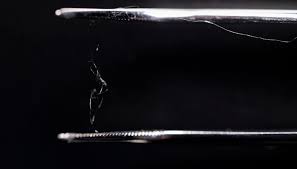
Breaking News
 $26M Frozen on Blockchain - With One Click
$26M Frozen on Blockchain - With One Click
 Italy are on national strike shutdown rejecting digital enslavement...
Italy are on national strike shutdown rejecting digital enslavement...
 The following U.S. states are currently using the rebranded "Reporty Homeland Security" so
The following U.S. states are currently using the rebranded "Reporty Homeland Security" so
 NATO Chief Urges Europe To Prepare For Long-Term World War With Russia, China, Iran & North Korea
NATO Chief Urges Europe To Prepare For Long-Term World War With Russia, China, Iran & North Korea
Top Tech News
 HUGE 32kWh LiFePO4 DIY Battery w/ 628Ah Cells! 90 Minute Build
HUGE 32kWh LiFePO4 DIY Battery w/ 628Ah Cells! 90 Minute Build
 What Has Bitcoin Become 17 Years After Satoshi Nakamoto Published The Whitepaper?
What Has Bitcoin Become 17 Years After Satoshi Nakamoto Published The Whitepaper?
 Japan just injected artificial blood into a human. No blood type needed. No refrigeration.
Japan just injected artificial blood into a human. No blood type needed. No refrigeration.
 The 6 Best LLM Tools To Run Models Locally
The 6 Best LLM Tools To Run Models Locally
 Testing My First Sodium-Ion Solar Battery
Testing My First Sodium-Ion Solar Battery
 A man once paralyzed from the waist down now stands on his own, not with machines or wires,...
A man once paralyzed from the waist down now stands on his own, not with machines or wires,...
 Review: Thumb-sized thermal camera turns your phone into a smart tool
Review: Thumb-sized thermal camera turns your phone into a smart tool
 Army To Bring Nuclear Microreactors To Its Bases By 2028
Army To Bring Nuclear Microreactors To Its Bases By 2028
 Nissan Says It's On Track For Solid-State Batteries That Double EV Range By 2028
Nissan Says It's On Track For Solid-State Batteries That Double EV Range By 2028
New Combination of Wood Fibers and Spider Silk Could Rival Plastic After It Outperforms in Tests

Researchers have developed a unique new material out of wood and spider silk—and since it outperforms most of today's synthetic and natural materials by providing high strength, stiffness, and increased toughness, scientists say it could one day replace plastic.
Achieving strength and extensibility at the same time has so far been a great challenge in material engineering: increasing strength has meant losing extensibility and vice versa.
Now Aalto University and VTT Technical Research Centre of Finland researchers have succeeded in overcoming this challenge by seeking inspiration from nature.
The researchers created a truly new bio-based material by gluing together wood cellulose fibers and the silk protein found in spider web threads. The result is a very firm and resilient material which could be used in the future as a possible replacement for plastic, as part of bio-based composites and in medical applications, surgical fibers, textile industries, and packaging.
According to Aalto University Professor Markus Linder, nature offers great ingredients for developing new materials, such as firm and easily available cellulose and tough and flexible silk used in this research. The advantage with both of these materials is that, unlike plastic, they are biodegradable and do not damage nature the same way micro-plastic do.
"We used birch tree pulp, broke it down to cellulose nanofibrils, and aligned them into a stiff scaffold. At the same time, we infiltrated the cellulosic network with a soft and energy dissipating spider silk adhesive matrix," says Research Scientist Pezhman Mohammadi from VTT.

 Carbon based computers that run on iron
Carbon based computers that run on iron

